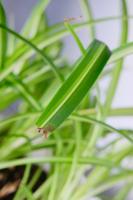How to Cut a Fig Tree to Transplant
Transplanting a fig tree is a great way to move it to a more favorable location or to give it as a gift to a friend or family member. Before transplanting a fig tree, it’s important to understand how to cut it properly. In this article, we’ll go over the steps you need to take to cut a fig tree for transplanting.
Gather Your Tools
The first thing you’ll need to do when cutting a fig tree for transplanting is to gather your tools. You’ll need a pruning saw, pruning shears, and a pair of gloves to protect your hands. You may also want to have a tarp or sheet to catch the cuttings and any debris that falls from the tree.
Choose the Right Time of Year
The best time to transplant a fig tree is during the dormant season, which is typically between late fall and early spring. This is when the plant is not actively growing, and it will be less likely to suffer from transplant shock.
Prune the Tree
Before you start digging up the tree, you’ll need to prune it. This will reduce its size and make it easier to move. Use pruning shears to cut back any dead or diseased branches, as well as any branches that are crossing over each other or growing in the wrong direction. Use a pruning saw to cut back any larger branches that are in the way.
Prepare the Roots
When you’re ready to dig up the tree, start by digging a trench around the tree about two feet away from the trunk. This will give you access to the roots. Use a shovel or garden fork to loosen the soil around the root ball. You’ll want to be careful not to damage the roots as you do this.
Cut the Root Ball
Once you’ve loosened the soil around the root ball, use a pruning saw to cut through any large roots that are not attached to the main root ball. Then, use the pruning saw to cut a circle around the root ball, about six inches away from the trunk. This will sever any remaining roots and free the tree from the ground.
Transplant the Tree
When you’re ready to transplant the tree, dig a hole in the new location that is about two times wider and deeper than the root ball. Place the tree in the hole and fill it in with soil. Water the tree thoroughly and add a layer of mulch around the base to help retain moisture. Keep the tree well-watered for the first few weeks after transplanting.
Conclusion
Cutting a fig tree for transplanting may seem daunting at first, but with the right tools and techniques, it’s a straightforward process. Remember to choose the right time of year, prune the tree, prepare the roots, cut the root ball, and transplant it carefully in its new location. With a little bit of care and attention, your fig tree is sure to thrive in its new home.

 how many times do yo...
how many times do yo... how many planted tre...
how many planted tre... how many pine trees ...
how many pine trees ... how many pecan trees...
how many pecan trees... how many plants comp...
how many plants comp... how many plants can ...
how many plants can ... how many plants and ...
how many plants and ... how many pepper plan...
how many pepper plan...






























